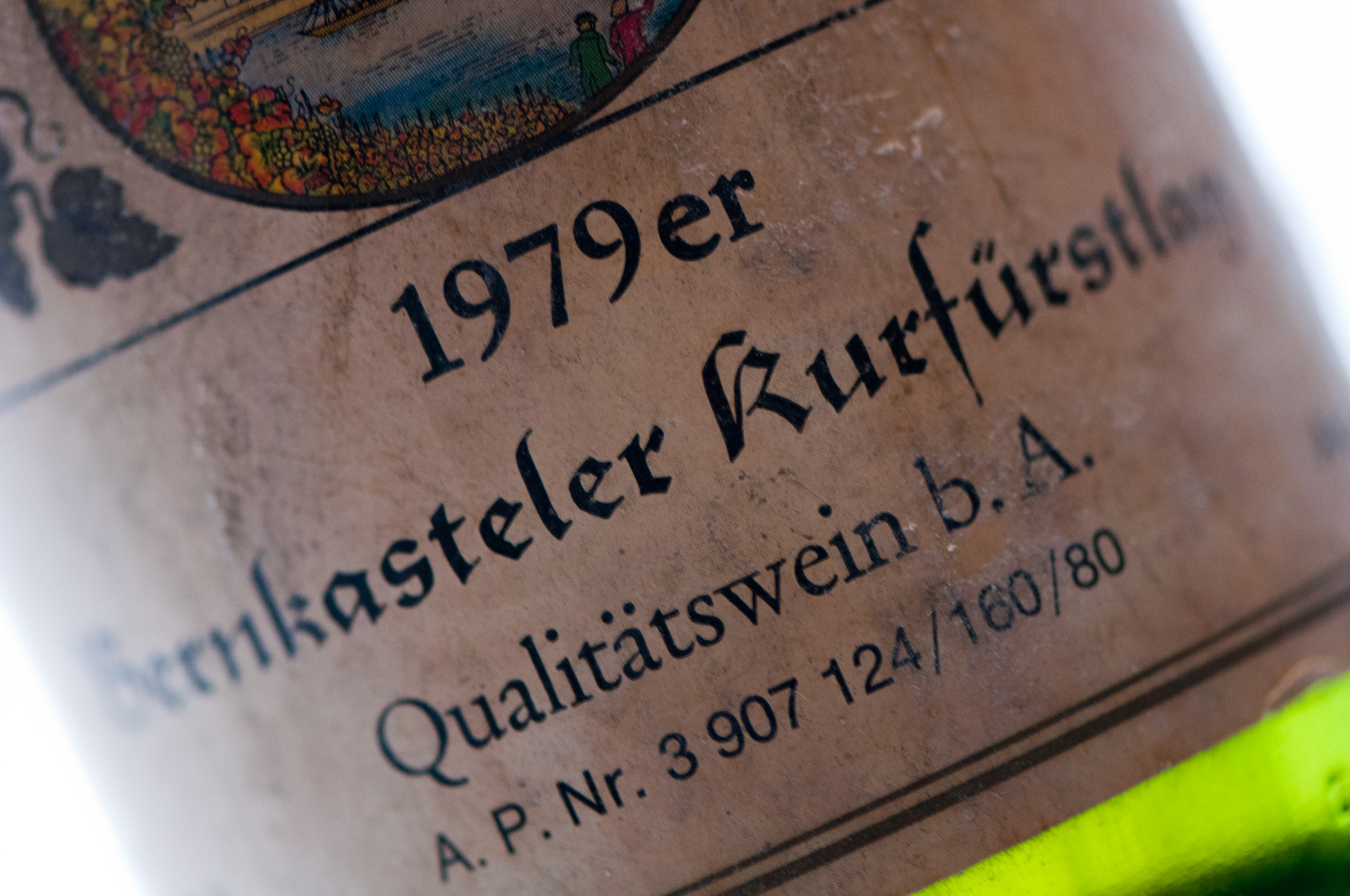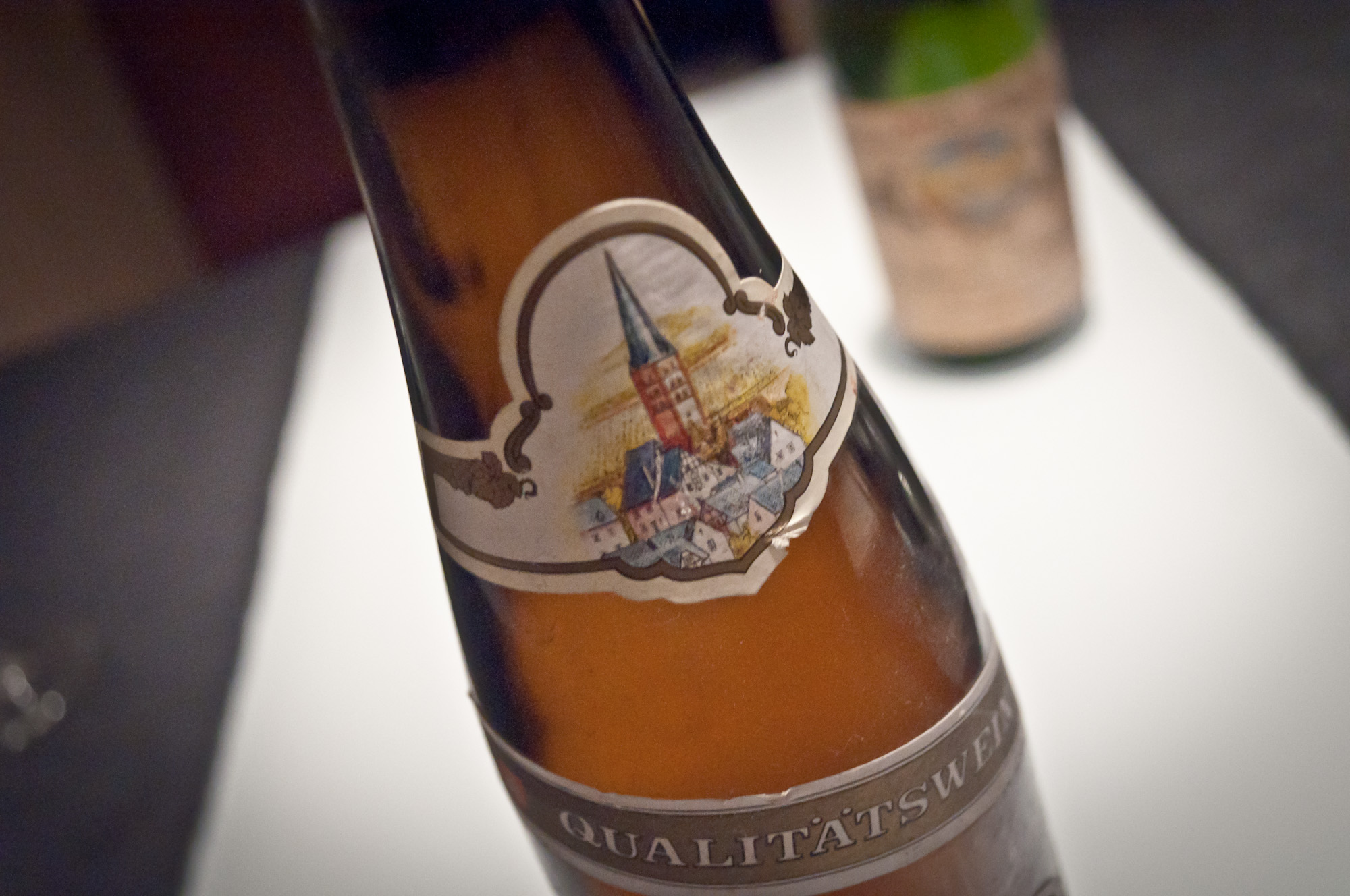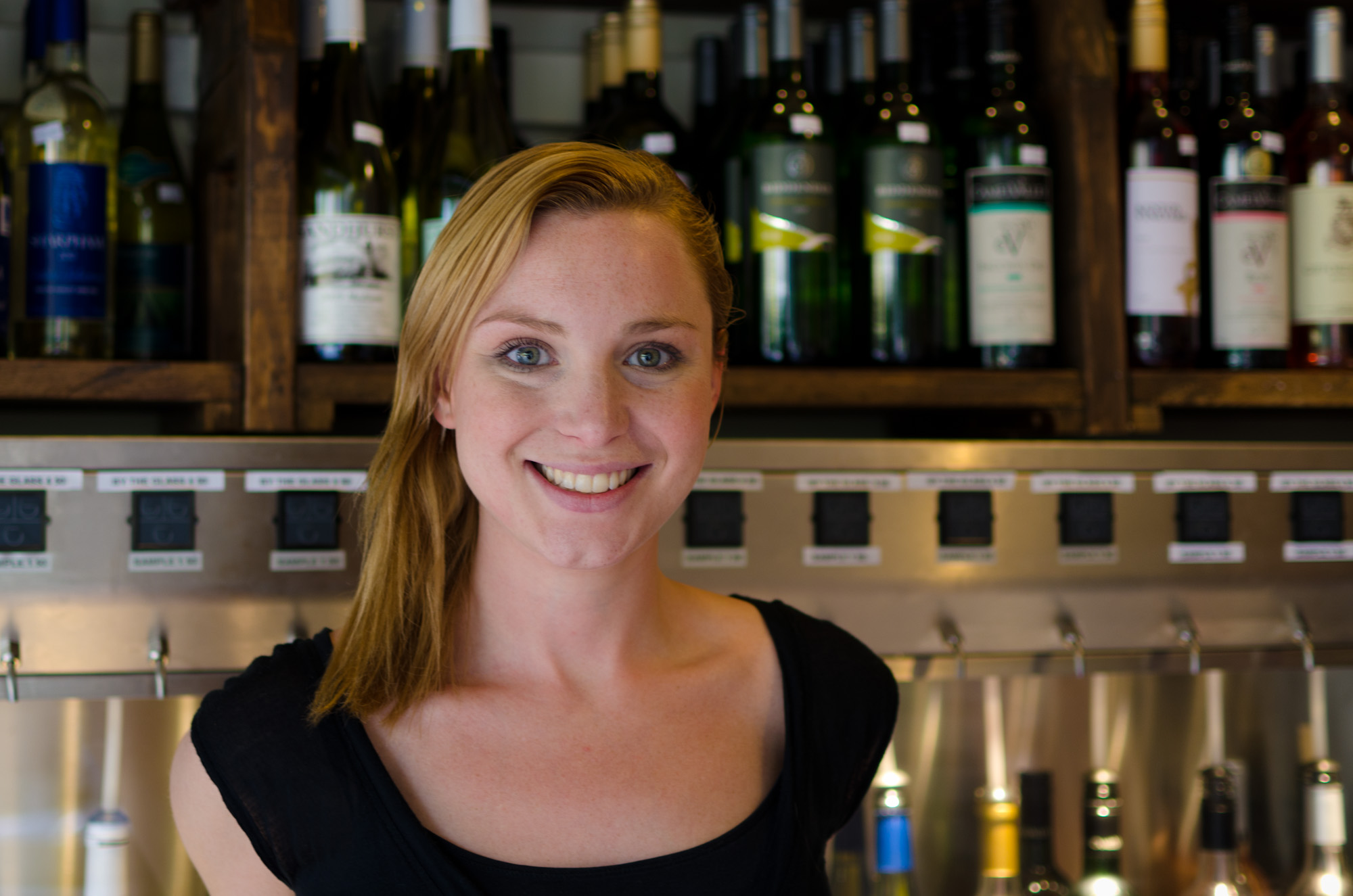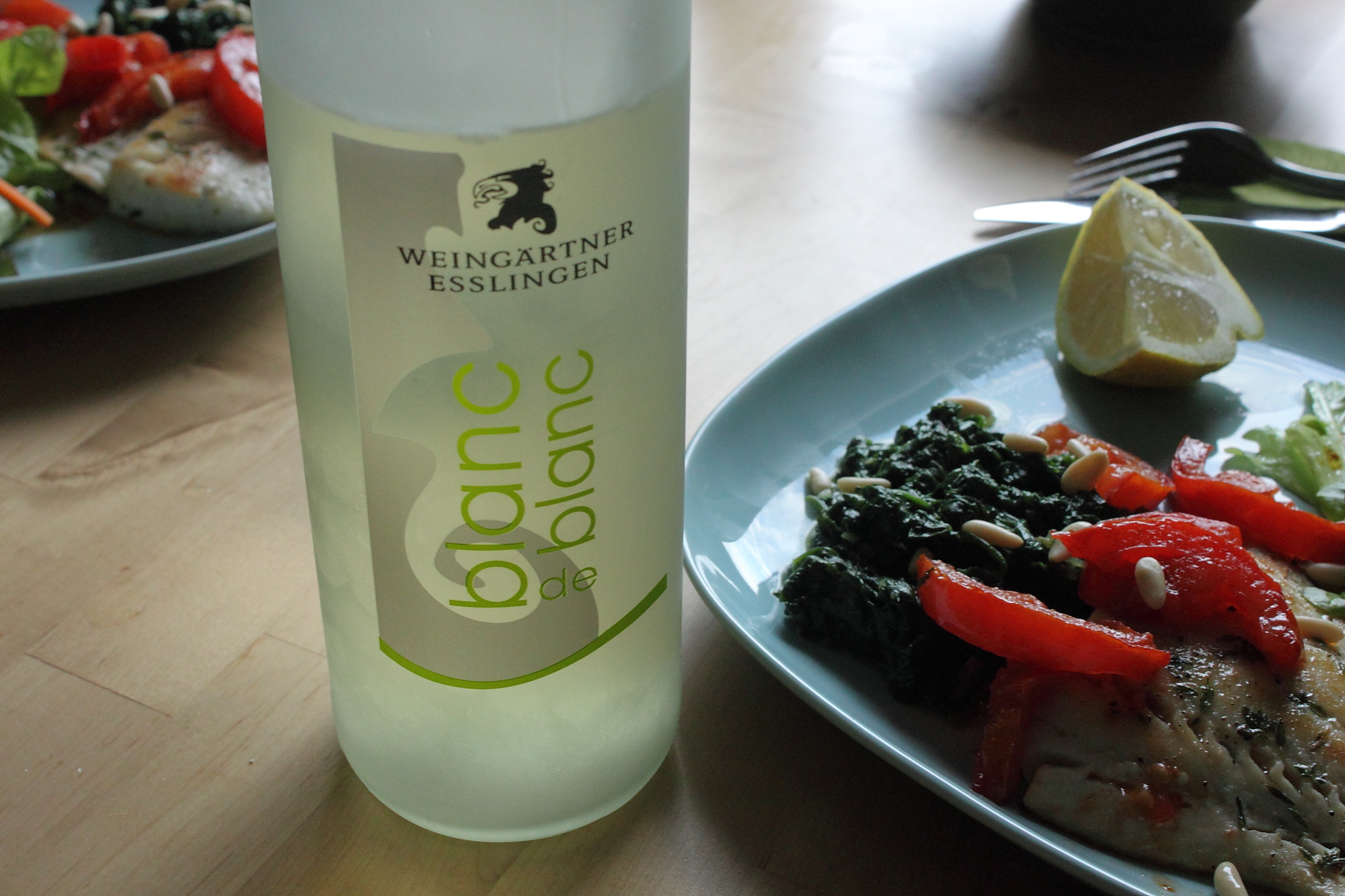Trash or treasure? A random tasting of aged wines
This rather pointless little posting is for fans of aged wines. I don't mean wines cellar-matured to an ideal drinking point, but those left to grow old beyond any responsible borderline moment. It is for those of you who might hunt for old wines on eBay or via specialised merchants, but would never stoop so low as to actually drink what other people throw out in disgust. You don't have to, because this is where your self-sacrificing correspondent comes in. Let me stress, though, that I was not, I was emphatically not rummaging through my next door neighbours' garbage in the hope of finding discarded, but still filled wine bottles. It was rather that someone had left the four of them standing outside of the bin, maybe having been tipped off that there is a pervert living nearby who might have a use for that kind of stuff. He could indeed. 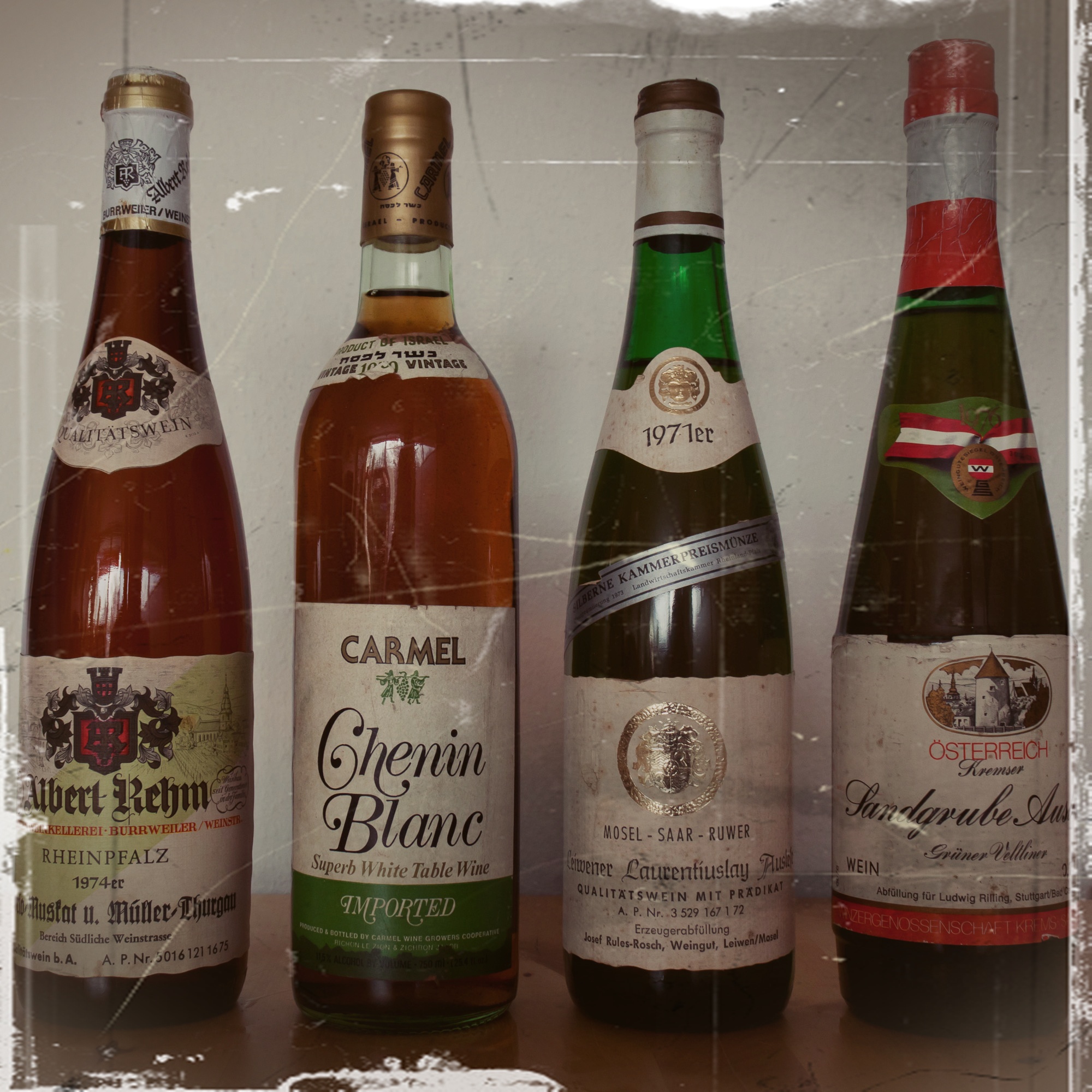 Here, then, is a little report about four random wines whose history is open to anyone's imagination and who have absolutely nothing to lose in terms of taste.
Here, then, is a little report about four random wines whose history is open to anyone's imagination and who have absolutely nothing to lose in terms of taste.




